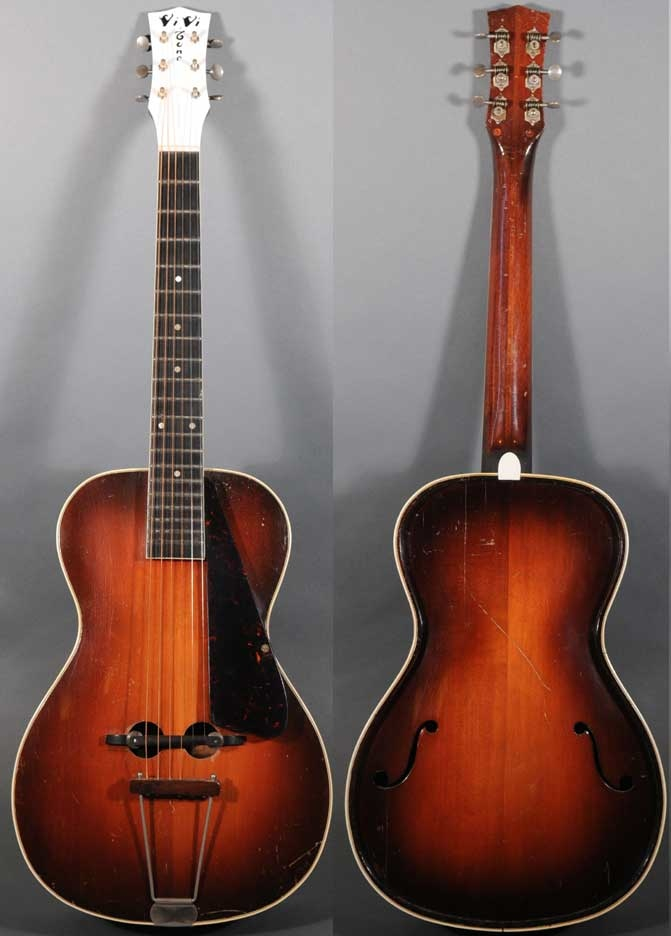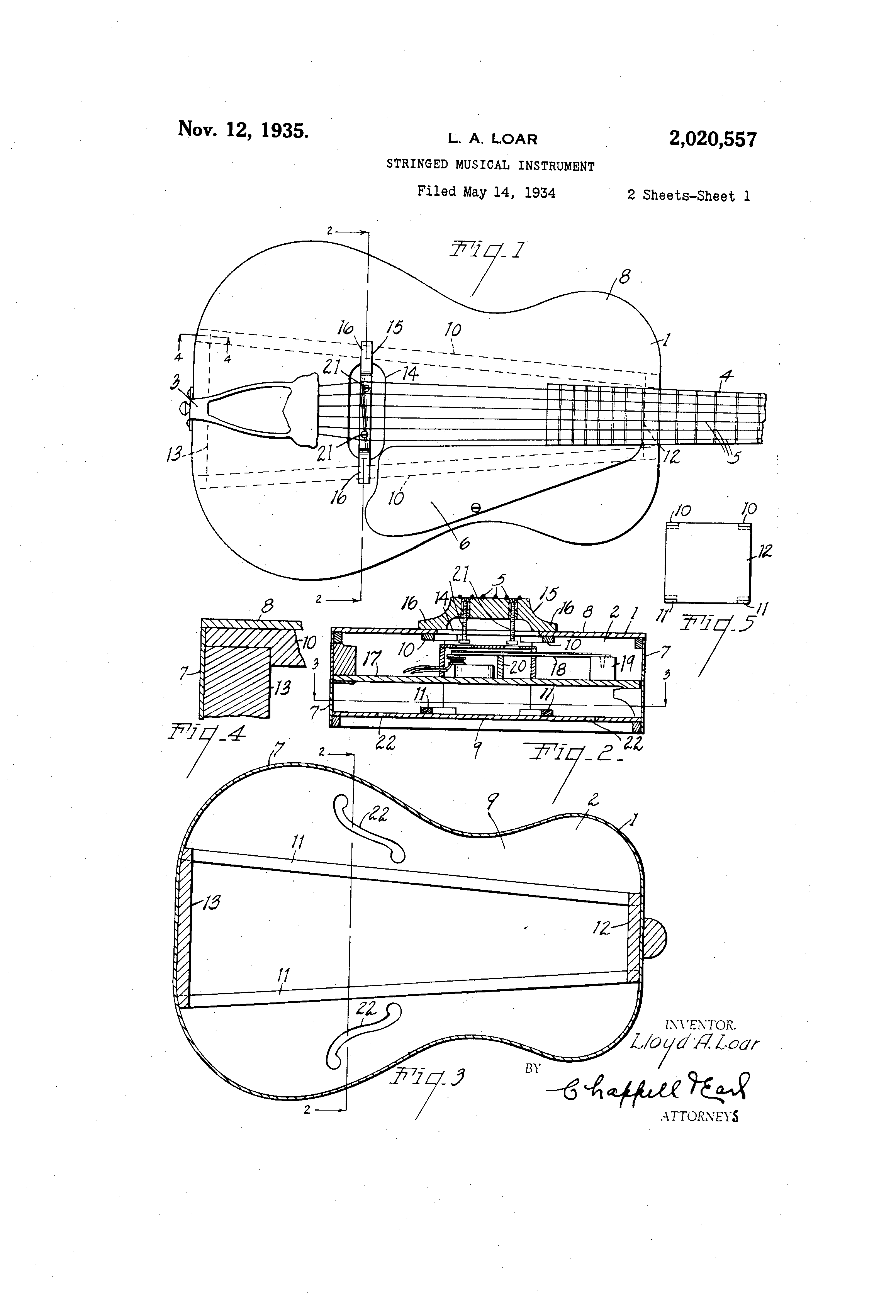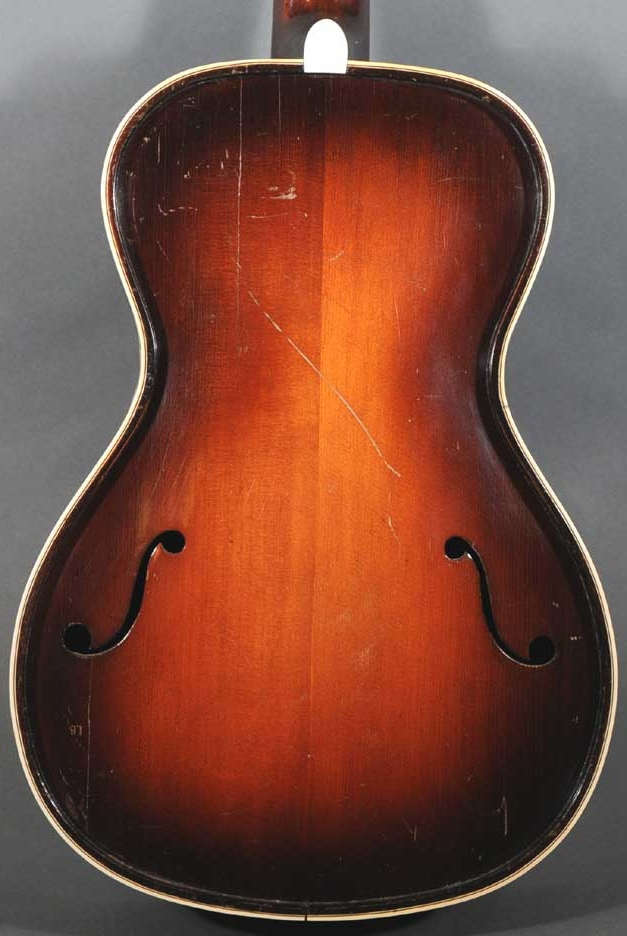1930s Vivi-Tone Acoustic Guitar
When Lloyd Loar left Gibson in 1924 he quickly set about starting his own company to build some of the designs that Gibson thought were too radical. In the early 1930s he founded Vivi-Tone, which built both electric and acoustic instruments. This guitar is one of the acoustic models and exhibits some of Loar’s more unusual ideas. The most obvious is the bridge, which actually goes through the top and sits on a sort of secondary soundboard in the middle of the guitar that is in turn coupled to the back by a series of braces. The idea was to build a system where the top and back were both driven by the string vibrations. The back itself is made of spruce and sports a pair of F-holes. The sides are much thicker than usual, which was supposed to give the top and back a rigid frame to allow them to vibrate more freely. Sadly, Gibson was correct in its assessment about Loar’s designs being too radical. Vivi-Tone’s instruments failed to catch on in the Depression-era guitar marketplace and the company soon went out of business. I’ve been lucky enough to play a couple of Vivi-Tones over the years and I thought that they sounded pretty good, but they didn’t have a lot of volume. These guitars are very rare and most players don’t even know the company existed, which means that they are actually pretty reasonably price for something made by one of America’s most influential instrument designers. This example is priced at $1950 and you can get it at Spruce Tree Music.

Here’s the patent info on the Vivi-Tone acoustic guitar.




